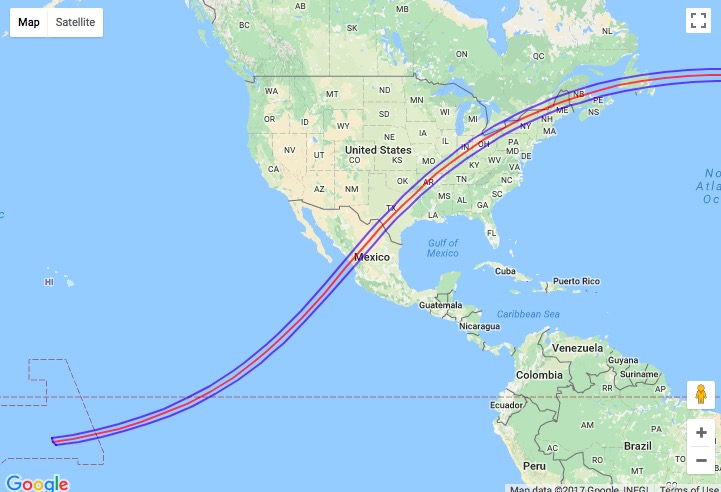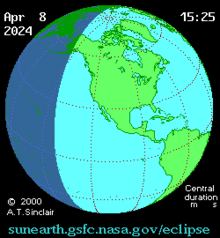
Getty
Today, July 2, 2019, there’s a total solar eclipse in parts of South America, but you can’t see it in the U.S. So how much longer will you have to wait until you can see an eclipse in the United States again? Unfortunately, it will still be about five years until you can see a total solar eclipse in the United States.
The next total solar eclipse in the United States will take place on April 8, 2024. It will be visible in parts of the United States, along with other parts of North America. The longest duration for this eclipse will be 4 minutes and 28 seconds long. That will be seen in Nazas, Durango, Mexico and Torreon, Coahuila. This is almost two minutes longer than the longest duration for the eclipse in 2017.
Totality for April 2024 will occur on a strip of land beginning at the Pacific coast, through northern Mexico, and then in the United States through Texas, Arkansas, Missouri, Illinois, Kentucky, Indiana, Michigan, Ohio, Pennsylvania, New York, northern Vermont, and New Hampshire.
The eclipse will also be visible in Canada, with totality crossing parts of Ontario, Quebec, New Brunswick, Prince Edward Island, and Newfoundland Island.
Here’s a map showing the eclipse’s path, as shared by NASA. It’s not technically running from coast to coast in the U.S., but it will still cover a large section of the U.S., plus Mexico and Canada.
This is the first total solar eclipse visible in Mexico since 1991.
This GIF shows the path of the totality on that day:
Mark your calendars. Many parts of North America that weren’t in the path of totality in 2017 will be in 2024.
Here’s a comparison of today’s solar eclipse and the one in 2024. First is the path for today’s eclipse. It’s a map of where the totality of the 2019 eclipse is visible today, according to NASA:
Now compare it again to the map of the path of totality for 2024:
The maps are very different. Now compare this to the path of totality that we saw in 2017, courtesy of NASA:
The totality path for 2024 is completely different from the path above, which we enjoyed in 2017. It’s fascinating to consider how much solar eclipse paths can change and vary.
There will also be an annular solar eclipse in the U.S. on October 14, 2023. This occurs when the moon passes between the Earth and the Sun, and the moon’s diameter appears smaller than the sun’s, blocking most but not all of the sun’s light. This makes the sun look like a ring around the moon.
After 2024, we won’t see the next coast-to-coast solar eclipse in the U.S. until August 12, 2045.
Remember: you need special glasses to watch a solar eclipse without damaging your eyes. You may not go 100 percent blind if you look at a solar eclipse, but at the very least you can end up with a permanent spot of blindness in the center of your vision. The technical term for this is solar retinopathy. It means the retina is damages from looking at the sun, causing a spot of blindness. It typically happens in the middle of the eye, when intense solar radiation hits the retinas and destroys photoreceptors. And you may not notice the damage until the next day.
In general, about half of the patients who have eclipse blindness recover in about six months. The other half either recover at least partially or they’re stuck with the damage for the rest of their lives. And there aren’t any good treatments. You just have to wait and see.



